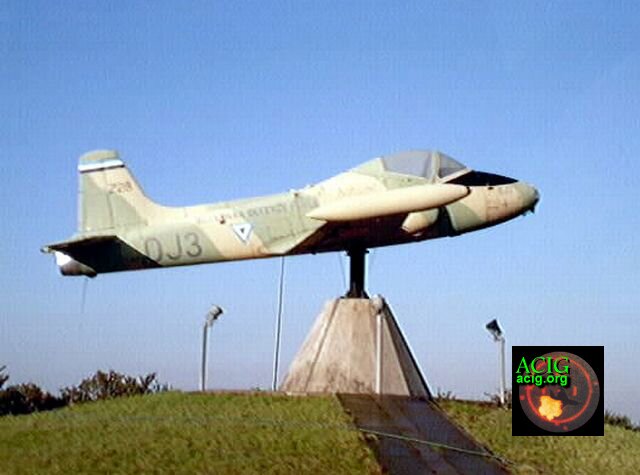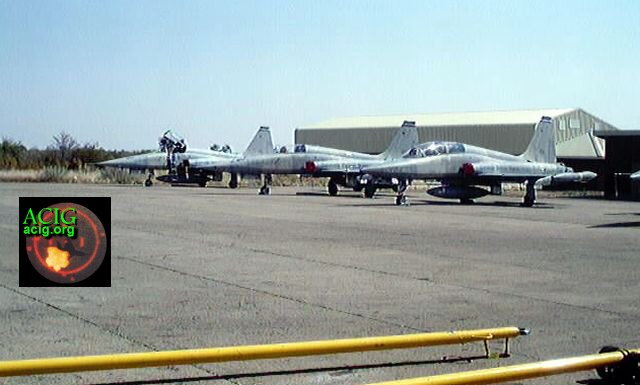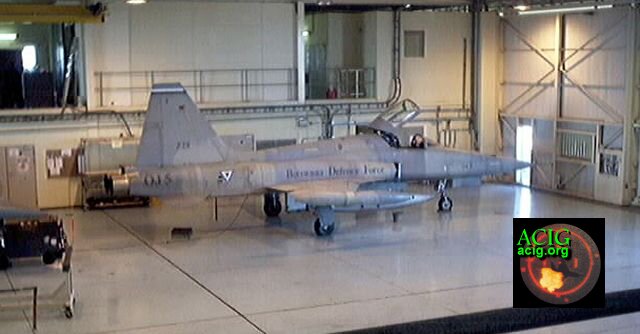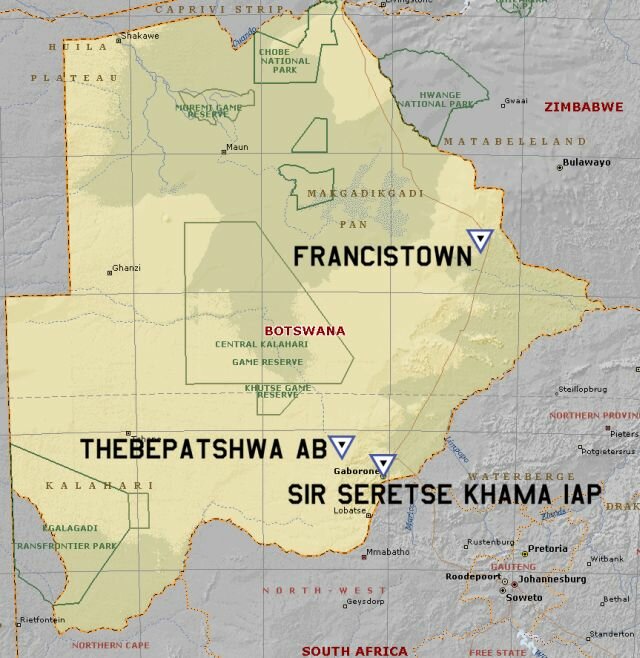 |
| Search |
|
|

|
 |
Central, Eastern, & Southern Africa Database
 |
The Botswana Defence Force (BDF) was founded in 1977, as an extension of the police, to perform border patrol, MEDEVAC, forward air control and communication roles at the times the COIN-war in Rhodesia (later Zimbabwe) was at its peak. Its initial equipment of two Pilatus Britten-Norman BN-2A-21 Defenders also gave it a measure of armed attack capability.
Other aircraft and helicopters followed during the 1980s. The number of Defenders eventually increased to 12, and they were followed by two Pilatus Britten-Norman Trislanders, and two Short Skyvan 3M transports, before also the first helicopters – in the form of Aérospatiale AS.350 Ecureuils – arrived. By 1988 three Defence Force Squadrons were formed, undertaking COIN-, transport-, communications- as well as training duties. Equipment allocations to each unit have ensured they share a degree of other duties. BDF unit designations were always relatively simple, in alpha-numeric order: Z1 was the first flying unit (equipped by BN-2s), while the Z21 became the first helicopter unit.
Today, the BDF is one of best-equipped, -trained, and –capable air forces in sub-Saharan Africa, operating not only modern transports – including Spanish-built CN.235Ms, or US-supplied Lockheed C-130 Hercules – but also Canadian-built and considerably upgraded F-5s.
 |
| BDF CF-5 "OJ-5", as seen by author at Gabarone, in 2002: see bellow for photographs! (Artwork by Tom Cooper) |
The BDF Air Wing experienced its largest expansion in the 1990s, when combat capability was added as well, in the form of BAC/BAe Strikemasters, acquired from different sources – including New Zealand.
Beginning in 1996, Strikemasters were replaced by ten Canadair CF-116s (Northrop F-5As licence-built in Canada), and three CF-116Bs (F-5Bs), which are locally designated CF-5As and CF-5Ds, respectivelly. Three additional single-seaters and two two-seaters were acquired in 2000. From available photographs, it appears that the BDF is currently operating CF-5s with two units: Z18, based at Sir Seretse Khama International Airport, near Gabarone, and Z28, based at Thebephatshwa AB, near Molepole.
As delivered to Botswana, the CF-5s were very advanced fighters – almost comparable to Boeing F/A-18A Hornets. They have got new GEC-Marconi HUDs and weapons aiming and computing system (WACS), with an air data compute, and an improved navaid suite, including Litton INS and GPS, Magnavox AN/ARC-164 VHF radios, JET standby attitude indicator, Corac AoA sensor, Honywell radar altimeter and Ferranti video cameras. The whole weapons system was linked to the MIL-STD 1553B databus, making them compatible with all possible NATO-standardised weapons. In addition, the structures of these aircraft were strengthened and they were re-winged, increasing their life-expectance for 3.000 additional hours.
Additional upgrades on BDF CF-5s in Botswana were undertaken by British Aerospace (BAe) Flight Systems. Specifically, the BAe was installing ALE-47 chaff & flare dispensers on two fighters, including one single- and a two-seater. Their QA Representative, Joe M., arrived in Botswana in 2002, and here are some of his recollections, together with four photographs from these times:
I found the Botswana people friendly and they seemed to like Americans. When I arrived at Sir Seretse Khama International Airport, in Gabarone, the US Government was providing financial aid to Botswana for AIDS prevention: I was told that up to 30% of the population is HIV-positive.
By the time all the Strikemasters have been removed from service. I saw only one, posted on a pole, in the middle of the base. I was told that the BDF was selling all the remaining Strikemasters, as well as few Cessna 150s.
[Note: two of ex-BDF Strikemasters were sold to Cote d'Ivoire; see a separate feature about the civil war in that country]
 |
| The only Strikemaster still apparent at Gaberone is this example, put on a pole in the middle of the base. |
The overall feeling was that there was a mixture of modern equipment in a “Third World” environment. The BDF had very little support equipment (starting with stands and ladders), and the local personnel used old tires or tables to climb around their aircraft. The “good” equipment was used on the aircraft undergoing periodic deep maintenance – work conducted by CASA workers, from Spain.
Installations at Gabarone – including hangars – were pretty modern, however. I think all were built by Canadians. When I was there, Orenda was building an engine shop, to enable the BDF personnel to maintain and overhaul J-85 engines for their CF-5s in situ.
The local unit was under command of a Major with previous experience on Strikemasters. I saw no other foreign pilots there, except a single Indian instructor (he even wore the full IAF uniform), providing air-to-air training to BDF-crews. Otherwise, pilots selected for flying CF-5s were mostly locals, with only one exception: a Flight-Lieutenant from South Africa. He learned to fly in South Africa, and actually had a job of flying commuters, but then immigrated to Botswana and applied for a commission with the BDF. He was accepted and sent to Canada for CF-5-training. While I was in Botswana, one of the local pilots crashed an CF-5 while practicing for an air show. It was a big loss for everybody.
The local unit (Z18) always had two or three planes on alert, and used even the two-seater when there was need. Training sorties were flown every second week, and mainly consisted of dropping bombs and firing rockets at the nearby range: we could hear the detonations in the distance while working. Instrument approaches to Gabarone were flown as well.
The BDF folks appeared anoxious to get some AIM-9 Sidewinders: it seems that they felt that if they could have some, they could seriously counter the (Shenyang) F-7 threat from Zimbabwe.
 |
| Alert line of CF-5s at Gaberone AB. Two or three CF-5s are always ready - frequently including one of several two-seaters acquired from Canada. For air-to-air role, these aircraft are armed only with 20mm cannons: the BDF is anxious to acquire some AIM-9 Sidewinders as well. |
Joe’s photos are a little bit grainy, but they tell the story “from the first hand” – and are thus an exceptionally rare historical document about an African air force in our days.
 |
| Above and bellow: BDF CF-5 serialled "OJ5" as seen while under maintenance at Gaberone. Note the mix of "Coke bottle" tanks in full camo, and drop tanks in silver-grey. As of 2002, BDF CF-5s were still not armed with any air-to-air missiles (All photos by Joe M.) |
 |
| Map of Botswana with three main airfields used by BDF. (Map by Tom Cooper, based on Encarta 2003 software) |
© Copyright 2002-3 by ACIG.org
Top of Page
|
|
 |
Latest Central, Eastern, & Southern Africa Database
|

|